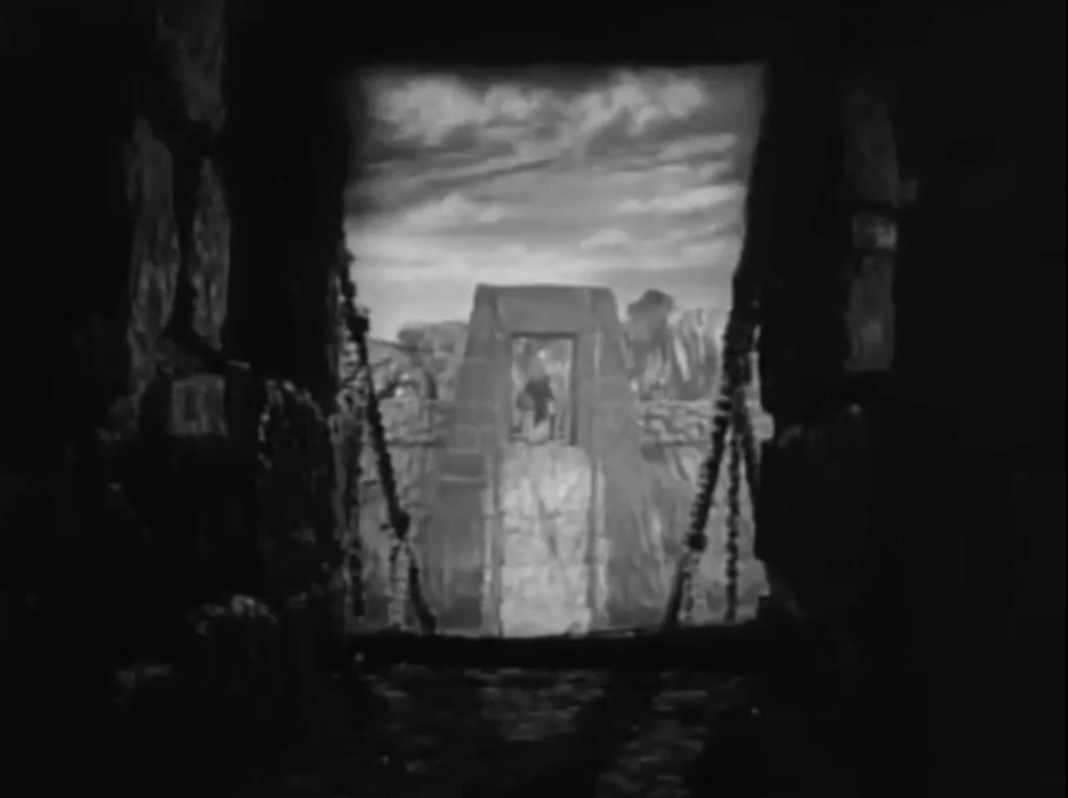Love from a Stranger
Love from a
Stranger features Basil Rathbone
as a very odd Bluebeard indeed, so iconoclastic he brings to mind Buster Keaton
frantically expunging eyes in Samuel Beckett’s Film (dir. Alan Schneider). There is music by Benjamin Britten in passing, and the
whole is from a play adaptation of an Agatha Christie enchantingly titled
“Philomel Cottage”.
Son of Frankenstein
This capital work
of a most prodigious director takes into account Robert Wiene’s The Cabinet
of Dr. Caligari and Fritz Lang’s Metropolis. Baron Wolf von Frankenstein is a family man seeking to
vindicate his father for a servant’s blunder. To him Ygor,
hanged for bodysnatching but not killed. The monster, struck by lightning, is
not dead but sleepeth. A new
name is found for Heinrich Frankenstein’s discovery, cosmic rays. The monster’s blood is at war with itself viewed
microscopically (cf. Kenton’s House of Dracula). Frankenstein’s
laboratory, latterly in ruins, was built on Roman sulfur baths now superheated.
Stanley Kubrick
was so impressed he made use of material he found here in at least four films.
Inspector Krogh’s right arm and Stroheim
impression are borrowed by Dr. Strangelove, the breakfast colloquy with
young Peter is signally a basis of Dr. Floyd’s picturephone
call in 2001: A Space Odyssey, the monster with Frankenstein’s
implements holding open its left eye is young Alex in A Clockwork Orange,
and the general milieu closes on The Shining as Frankenstein bids to
send his wife and son away to safety in Brussels while Krogh
questions the boy about the monster.
It perishes in
the flaming mud beneath the laboratory, which along with the castle is
presented by the departing baron to the villagers of Frankenstein, who open the
film determined to balk him.
The monster is
instrumental in Ygor’s plan to kill the eight
jurors who condemned him.
Rathbone’s
genius with rapid dialogue is useful, Karloff is dramatically eloquent, Lugosi
has a brilliant part, Atwill sticks darts for convenience’s sake into
that stiff yet pliable arm as he begins a game with the baron.
The Bridge of San Luis Rey

The literary
theme is arranged as a cinematic investigation conducted by Brother Juniper
(with voiceover narration at times), not unlike Mr. Arkadin (Confidential
Report, dir. Orson Welles), say, and there is Akim Tamiroff as Uncle Pio, who remembers his artistic disciple La Perricholi (Micaela Villegas, Offenbach’s
La Périchole)
singing “in the streets for a living,” and there is her song
stating the essence of the matter,
|
I can tell you just where he’ll
be, all day long there he’ll be, talking to his donkey. It is sad to be a donkey, very sad to be a donkey; you are sat on that’s why it
is— you can’t deny it is sad to be a donkey. |
Dimitri Tiomkin did not win the Oscar that year in the
Second World War (it went to Max Steiner for Since You Went Away, dir. John Cromwell).
Cf. Lubitsch’s Rosita, Renoir’s Le Carrosse d’or.
Leonard Maltin, “a slow-moving film.”
TV Guide, “stagey... obvious... cheap... crude... stilted...
forgettable.” Hal Erickson (All Movie Guide), “a ponderous treatment”.
Halliwell’s Film Guide, “heavy
weather”.
Captain Kidd
The pirate brood
seen to perfection, claiming responsibility in the state and among the landed
gentry as guardians of the public order and protectors of wealth, thieves and
murderers all.
A little theme
rises out of Howard’s Fire Over
England, Crowther couldn’t see it really happening, Variety missed the point of casting
Barbara Britton opposite Charles Laughton et
al. for the face she bears.